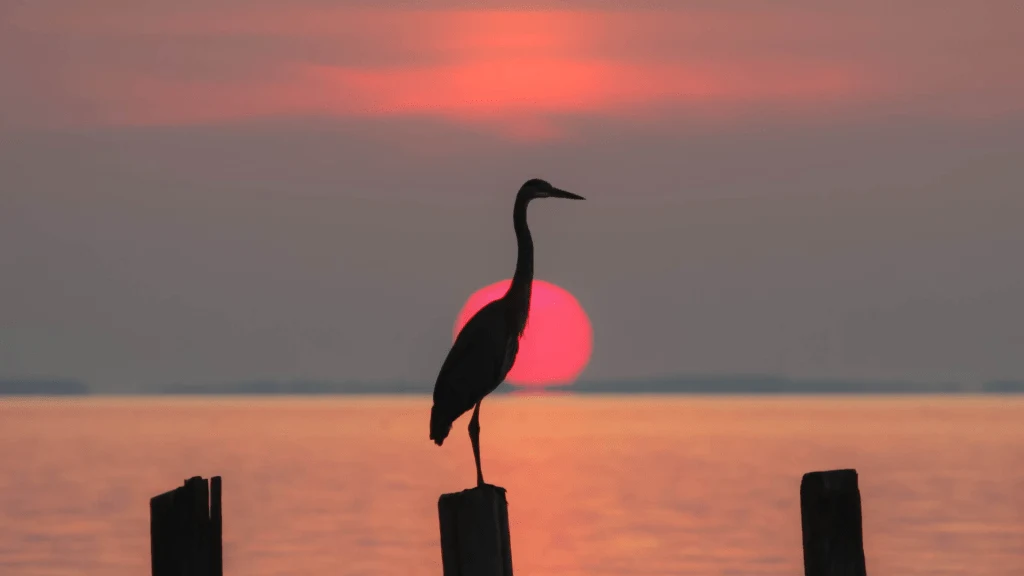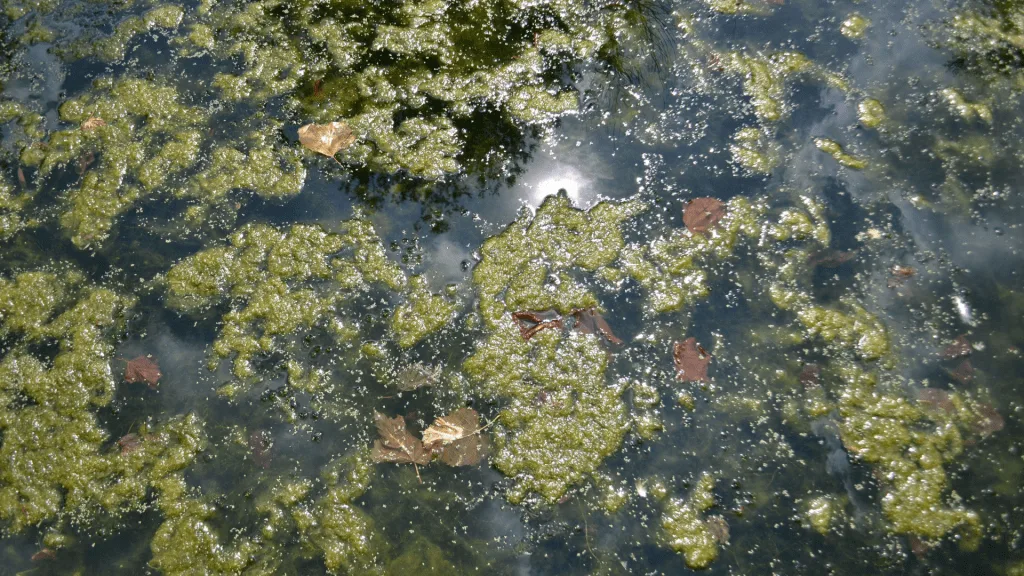Along the eastern seaboard lies a water phenomenon of trillions of gallons of water – the Chesapeake Bay. The bay is a playground and a habitat for millions of plants, animals, and people.
While many bridges link the land together over the various access points across the water, what really links it all together are the commonalities of life that Chesapeake Bay sustains.
And that life includes some dangerous creatures. We’ve got you intrigued now, don’t we? We have seven dangerous creatures listed for you right here.
Where Is Chesapeake Bay?
Before you start planning your next trip anywhere far away from Chesapeake Bay because we’ve heightened your sense of possible wildlife encounters, think again. Millions of tourists flock to the Chesapeake Bay area every year to visit its surrounding cities and to play in its coastal waters and tributaries.
There are dangerous creatures in every corner of the earth, including Chesapeake Bay, but the experience of visiting the East Coast far outweighs the danger of the creatures that call this area home. Located along the shores of Maryland, Delaware, Pennsylvania, New York, Virginia, West Virginia, and the District of Columbia, the 64,000 square miles of this eastern bay area are worth a visit.
What Is Chesapeake Bay Known For?
Besides its 18 trillion gallons of water and over 11,000 miles of shoreline, Chesapeake Bay is known for its diversity of wildlife. It accesses 1200 sites along the water for recreation and work.
It is the largest estuary – where freshwater mixes with saltwater – in the U.S. and the third largest, created from over 100 streams, rivers, and other bodies of water. Many people have fished, crabbed, boated, swam, lived, worked, paddled, and played here for generations.
But Chesapeake Bay isn’t just home to people working and playing. With 8 million acres of preserved land, it’s also home to 3600 species of plants and animals.
Pro Tip: Unsure if a visit to the Chesapeake is right for you? Check out these 5 Reasons to Avoid Chesapeake Bay.

7 Dangerous Creatures in Chesapeake Bay
Yes, some of those species of animals are dangerous creatures. However, the more you know about the dangerous creatures, the more prepared you are to avoid encountering them. And if you do happen to cross paths, at the very least, you’ll know what you’re up against.
From a tiny deer tick to a massive alligator, these are seven creatures to avoid when visiting Chesapeake Bay.
1. Copperhead
Copperhead snakes are quite common throughout Chesapeake Bay and the surrounding area, although they primarily prefer to live near rivers and streams. They feel right at home in forested areas with plenty of debris, foliage, and vines to hide in.
This helps them blend into their environment, especially when surrounded by dead leaves. Oftentimes, they can go completely unnoticed. Copperhead snakes bite, but they’re not typically very aggressive, and the venom from their bite is rarely fatal to humans.
2. Bull Shark
Bull sharks are in shallow waters. And where do most people like to swim? Shallow waters. Bull sharks aren’t creatures to simply shrug your shoulders about and move on. They have been spotted in Chesapeake Bay and can easily swim between fresh and saltwater.
To avoid these stealthy creatures, remove jewelry before swimming. They like flashy objects, so don’t wear bling. They also like to hang around shallow waters during sunrise and sunset, and they will attack unprovoked. Stay out of the water if there are any reports of this creature in the bay.
3. Jellyfish
It’s wise to stay away from jellyfish, especially if you’re in the Chesapeake Bay area, as they’re something of a menace. Every year there are around one to two million stings reported in the area.
It’s rare for the venom to be strong enough to take a human life. But if you’re highly allergic, it definitely won’t do you any good. Those stings really sting! If you do happen to get stung, applying ice or hot water to the affected area is usually better than anything else you can do. That reduces swelling and relieves pain.

4. Deer Tick
Deer ticks are tiny but can pack a powerful punch if they find their way onto you. These pesky parasites are often carriers of Lyme disease, but they’re so small you won’t even feel them. If allergic, a tick bite can also be dangerous and cause major discomforts, such as burning sensations, allergies, and blisters.
Make sure to check for ticks in your clothing or on your body after spending time exploring in the woods or tall grasses. Deer ticks might not sound dangerous, but it’s best to stay vigilant about these tiny things.
5. Black Widow Spider
Thanks to its sharp fangs, unique glossy black body, and red hourglass-shaped underbelly, the black widow is one of the most feared and easily recognizable spiders on the planet. While these spiders – mostly females – can bite, the bites aren’t usually fatal to humans. If bitten, their toxins can cause excruciating pain, even weakness, hypertension, and muscle cramps.
Found in almost any forest around the globe, these spiders are quite common. It’s still fairly simple to stay away from them, though. Just don’t go poking around under logs and dead leaves. By staying away from them, you’re going a long way in preventing possible pain.
6. Red-Tailed Hawk
You might not think of a red-tailed hawk as a particularly dangerous creature when hunting you. And in that regard, you’re correct. However, if you happen upon this beautiful bird of prey, marked by its dark red tail feathers and piercing eyes, in its territory, you might be in for a surprise.
So, if you hear a screech from above and a bird is circling, it might be time to high-tail it out of there. Red-tailed hawks will protect their territory from predators, and they might just consider you a predator.
7. American Alligator
Alligators are known to inhabit freshwater lakes, marshes, and swamps. Many of the places are common in Chesapeake Bay. Although rare, both alligator attacks and even fatalities from alligator attacks can happen.
The best way to prevent an attack is to simply stay away from known gator habitats. Follow posted signs and regulations. If you ever happen upon an alligator, keep your distance.
Pro Tip: After visiting the Chesapeake Bay, camp out at one of these 20 Best Free Camping Spots (on the East Coast).

What Are Algal Blooms?
While the above creatures can be dangerous and wreak more than havoc on your health, what we really should be on the lookout for are algal blooms. Yes, plants can be just as dangerous as some creatures, especially when they are quick-growing microscopic algae.
Harmful algal blooms (HAB) are toxin-producing algae that reproduce rapidly within bodies of water. Environmental factors such as temperature or nutrient levels from wastewater can increase the toxins rapidly, turning a healthy body of water into a dangerous cesspool.
If people are exposed to a HAB via fish from the water or from swimming in an infected source, that can cause diarrhea, vomiting, seizures, liver damage, and even paralysis and death. So, just like you would avoid coming into contact with dangerous creatures, you should also avoid water impacted by an algal bloom.
Tips for Staying Safe When Visiting the Chesapeake Bay
The best way to stay safe from any water, forest, or coastline hazards is to avoid the danger in the first place. Prevention is key. Don’t knowingly enter areas of infestation when it comes to ticks, for example. If there have been reports of sharks in the water, don’t go swimming.
Follow posted signs and guidelines. Report anything suspicious with wildlife behaviors, and be aware of your surroundings.
Enjoy Your Visit But Watch for Wildlife in Chesapeake Bay
Visiting the Chesapeake Bay area should be just as magical and wondrous as the bay itself. Just because there are possibilities of running into dangerous creatures and plants doesn’t mean you have to.
Seek out adventures on the water, in the forest, and on the coast, but watch for wildlife, plants included. They’re all much better looking from afar.
Discover the Best Free Camping Across the USA
To be honest with you, we hate paying for camping. There are so many free campsites in America (with complete privacy).
You should give it a try!
As a matter of fact, these free campsites are yours. Every time you pay federal taxes, you’re contributing to these lands.
Become a FREE CAMPING INSIDER and join the 100,000 campers that love to score the best site!
We’ll send you the 50 Best Free Campsites in the USA (one per state). Access the list by submitting your email below: